EcoE bike Blog
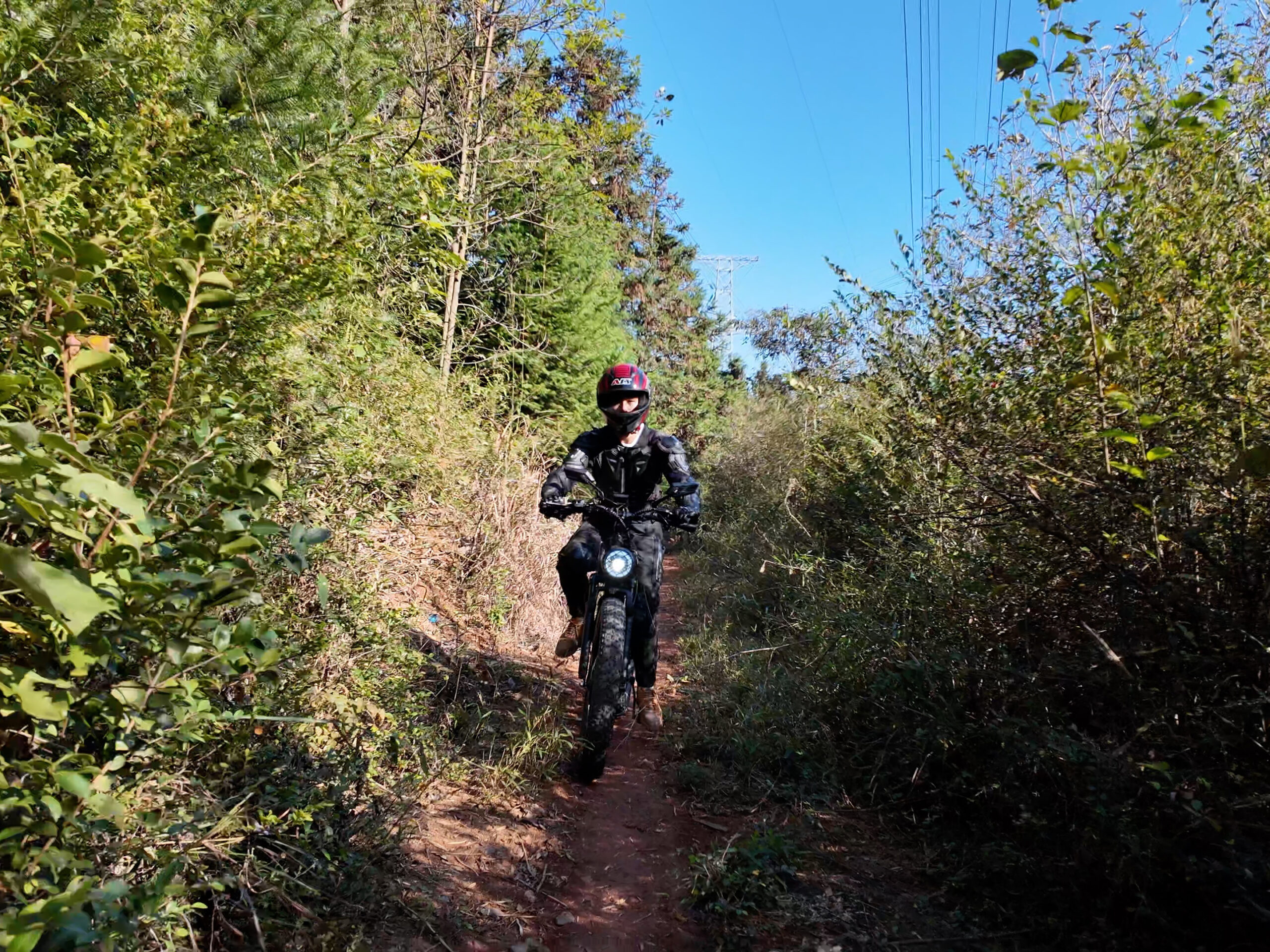
Is a 5000W Electric Bike Motor Worth It? An In-Depth Performance Breakdown
The electric bike market is flooded with bold claims about motor power, and 5000W models have become a hot topic. But with higher price tags and heavier builds, many riders wonder: Does a 5000W motor truly justify the investment? We dissect its real-world performance, weigh the pros and cons, and help you decide if it’s the right choice for your needs. The 5000W Advantage: Raw Power Meets Practicality A 5000W motor isn’t just about bragging rights—it’s a game-changer for specific use cases. Here’s what our tests revealed: Speed & Acceleration: Compared to standard 750W commuter bikes, a dual 5000W motor setup (like those found in high-performance models) can hit 28MPH in seconds, making it ideal for riders who need to keep pace with urban traffic or tackle long stretches between stops. Hill Climbing Mastery: On steep 20% inclines, the motor maintained consistent torque without pedaling strain, a stark contrast to lower-powered bikes that often require manual effort. Dual-Motor Versatility: Models with independent front/rear motors adapt seamlessly to slippery or uneven terrain, automatically shifting power to prevent wheel spin—perfect for adventurous riders. But there’s a catch: Pure throttle mode drains the battery quickly (35-50 miles range). However, pairing pedal assist with a high-capacity 60V 32AH battery (common in premium builds) can extend range to 80+ miles, balancing power and practicality. Who Needs 5000W? Breaking Down Use Cases ✅ Worth It If… You’re a hybrid commuter: Your daily route mixes crowded streets, steep bridges, and uneven bike lanes. You crave adventure: Weekend trail rides or gravel paths are part of your lifestyle. You haul heavy loads: Cargo racks, child seats, or grocery runs demand extra torque. ❌ Think Twice If… Your rides are short, flat, and predictable. Portability is a priority (5000W bikes often weigh 70-90 lbs). Budget constraints outweigh performance needs. […]
Read more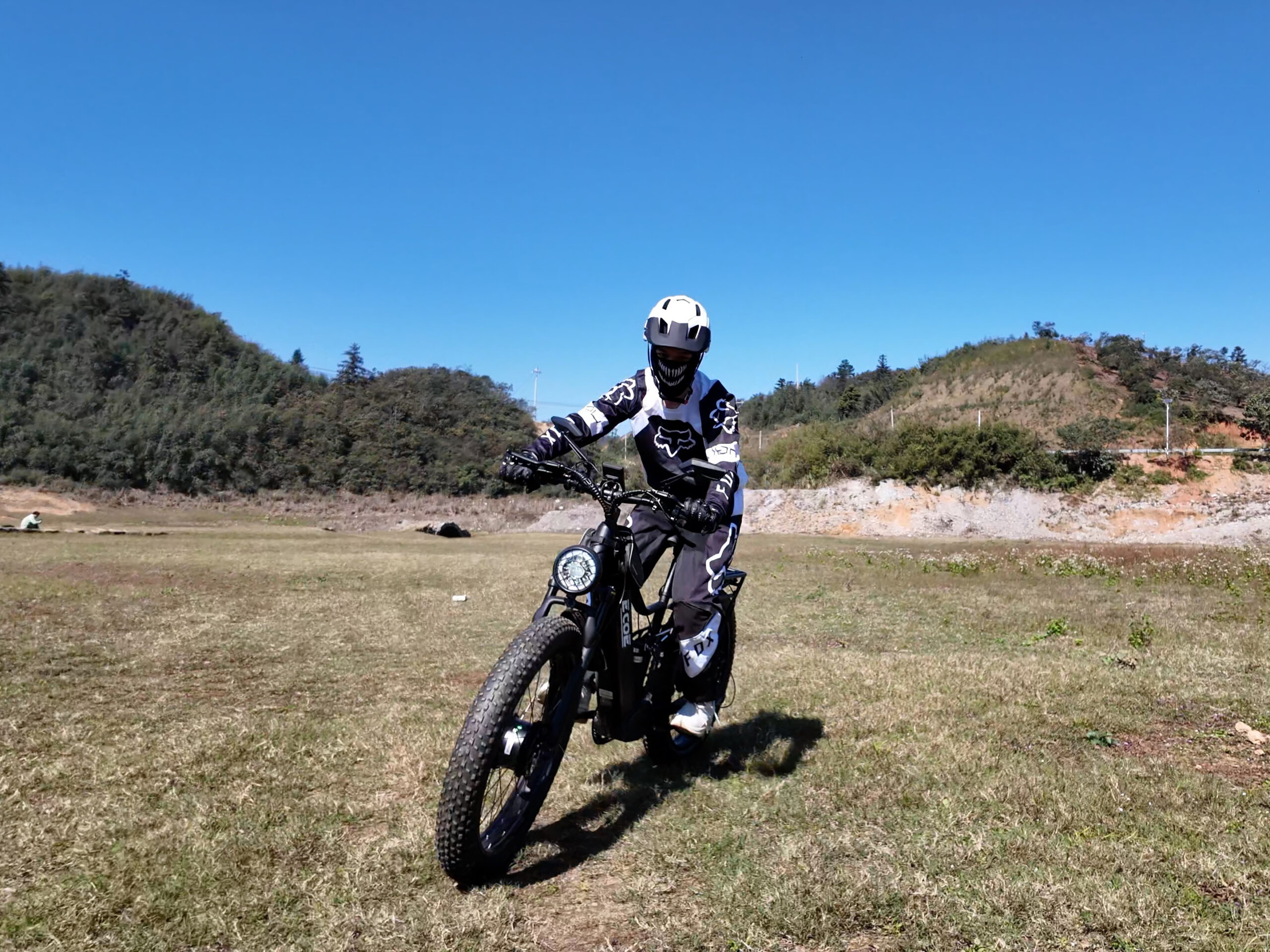
Just How Powerful Is a 5000W Electric Bike Motor? Real-World Performance Test!
In the electric bike market, high-power motors have always been the ultimate pursuit of performance enthusiasts. The 5000W motor, as one of the “top configurations” currently available, is often labeled as a “power monster.” However, beyond the parameters and hype, what is its true performance like? Through our real-world testing, from daily commuting to complex terrains, we will uncover the truth. The motor power of ordinary commuting electric bikes typically ranges from 250W to 750W, while the 5000W figure sounds more like a motorcycle level. We tested the EcoE electric bike model equipped with dual 5000W brushless motors and found its performance to be distinctive:Acceleration and Top Speed: On flat surfaces, the bike can accelerate from a standstill to 28MPH (approximately 45km/h) in just 6 seconds, almost matching the performance of a lightweight electric scooter. In hill-climbing tests, facing a 15° slope, the motor output remained stable, allowing the bike to reach the top effortlessly without the need for standing pedaling. Dual-Motor Synergy: The design of independent front and rear wheel drives demonstrated superior off-road capabilities on sandy or muddy terrain. The intelligent power distribution prevented single-wheel slippage. However, high power also brings higher energy consumption. Our tests revealed that the bike’s range in pure electric mode is approximately 35 miles (56 kilometers), while assisted pedaling can extend it to 80 miles (129 kilometers) — making battery capacity and energy management technologies crucial.The value of the 5000W motor lies not only in speed but also in its tolerance for complex road conditions. The tested model is equipped with 26×4-inch wide tires and a dual-suspension system for both the front and rear wheels. In practical use: Urban Commuting: When encountering speed bumps or cobblestone roads, the vibration filtering is noticeable, and the bike’s stability is superior to that of ordinary electric […]
Read more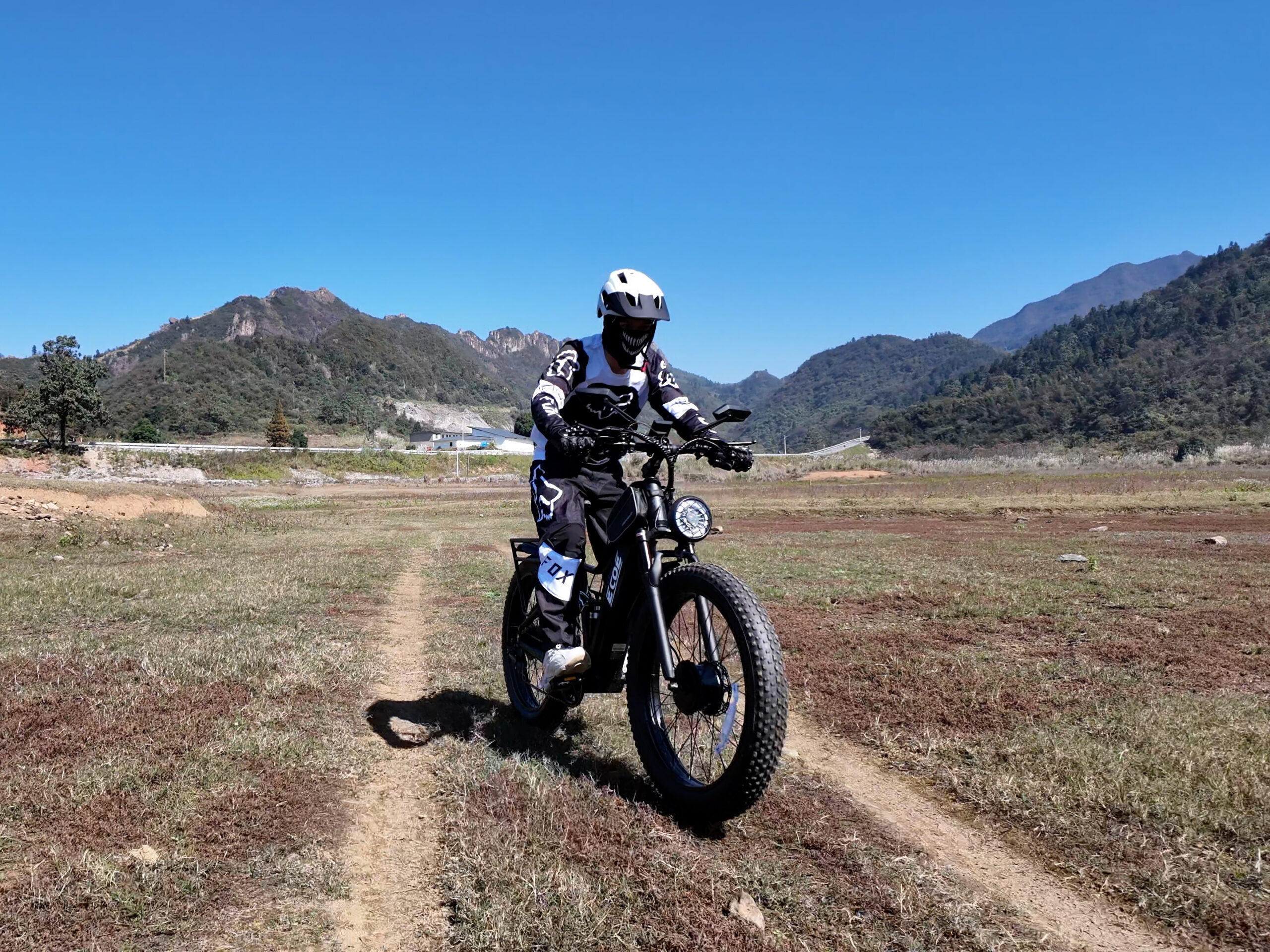
Ultimate 5000W Electric Bike Motor Modding Guide: Boost Your Power to the Max!
So you’ve got a 5000W electric bike, but that itch for more speed, torque, and range just won’t quit. Welcome to the dark art of e-bike modding—where raw power meets engineering creativity. We’ve cracked open controllers, stress-tested batteries, and even set a few (minor) fires to bring you this no-BS guide to unlocking your motor’s hidden potential. Pre-Mod Prep: Know Your Limits Legal Disclaimer: Modding may void warranties and violate local e-bike laws. Proceed at your own risk. Baseline Your Bike Pro Tip: Use a GPS tracker (not the speedometer) for real-world data. Safety Non-Negotiables Level 1 Mods: Quick Wins for +20% Power 🔧 Controller Tuning 🔧 Battery Parallel Kit Level 2 Mods: Pushing the 5000W Envelope 🔧 Phase Wire Upgrade 🔧 Liquid Cooling 🔧 Custom Firmware Level 3 Mods: Enter the Danger Zone 🔧 Dual Controllers 🔧 Lithium Titanate (LTO) Battery Swap The EcoE Advantage: A Modder’s Canvas Survival Tips for Modded Bikes The Final Test: Our Modded Monster’s Stats After $1,200 in upgrades: But was it worth the melted connectors and one flaming controller? Absolutely. 🔋 Modder’s Toolkit 💡 Why Choose a Mod-Friendly Base Bike Savvy builders prioritize bikes with: What’s the Craziest Mod You’ve Attempted? Confess below! ⚡
Read more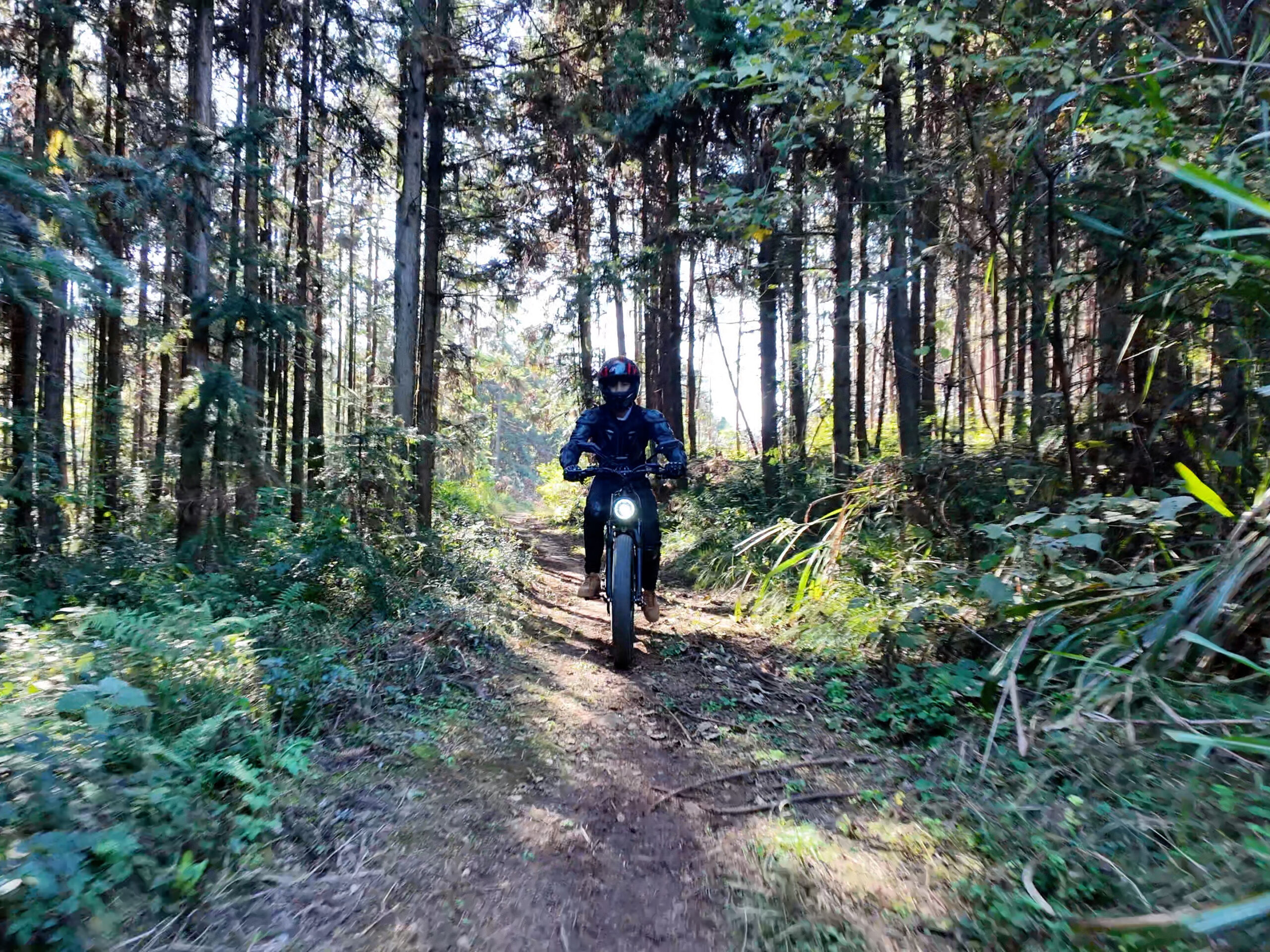
5000W Electric Bike Motor Price Breakdown: Are You Familiar with These Brands?
The allure of a 5000W electric bike motor comes with a maze of price tags—from suspiciously cheap $1,200 models to eye-watering $5,000 “premium” builds. But what exactly are you paying for? We dissect the market’s hidden pricing tiers, spotlight lesser-known brands, and reveal where your dollars make the most impact. The 5000W Price Spectrum: From Bargain Basement to Luxury Prices vary wildly based on engineering quality and brand positioning. Here’s the breakdown: Price Tier Typical Features Red Flags $1,200-$1,800 Dual motors, basic suspension, 60V 20-25AH battery No-name batteries, generic tires $1,800-$2,500 Branded motors (Bafang, etc.), 60V 30-35AH battery Limited warranty (≤1 year) $2,500-$4,000 Integrated tech (apps, GPS), UL-certified batteries Overpriced accessories $4,000+ Aircraft-grade frames, dual suspension, torque sensor Diminishing returns on performance Surprise standout: Brands like EcoE disrupt the mid-tier ($1,500-$1,800) with dual motors + 60V 32AH batteries—features usually reserved for $2,000+ bikes. Brands You’ve Never Heard Of (But Should) While giants like Trek and Specialized avoid 5000W bikes, these under-the-radar players dominate the space: Pro Tip: Prioritize brands with local repair networks. Shipping a 90-lb bike for warranty fixes costs $300+! The “Hidden Tax” of Cheap 5000W Bikes That $1,299 Amazon special? Prepare to pay extra for: Where to Splurge (and Where to Save) Worth Every Penny:✅ Motor controllers: Waterproof models (IP65+) prevent trailside meltdowns.✅ Hydraulic brakes: Mandatory for 30+ MPH stops.✅ Hot-swappable batteries: Critical for long adventures. Skip the Hype:❌ Carbon fiber frames: Aluminum alloys (6061/7075) offer better durability-to-cost ratios.❌ Bluetooth apps: Gimmicky outside theft tracking.❌ Dual suspension on pavement: Hardtails save $400+ for street riders. The EcoE Edge: Decoding Mid-Tier Value Hit This Price-to-Performance Sweet Spot After analyzing 20+ brands, we recommend: 🔋 Price ChecklistBefore buying, confirm:☑️ Battery certification (UL/CE vs. generic)☑️ Motor brand (Bafang, Bosch, etc.)☑️ Warranty coverage (motor + battery)☑️ Return policy (minimum 14 days) 💡 Why EcoE Disrupts the MarketPositioned […]
Read more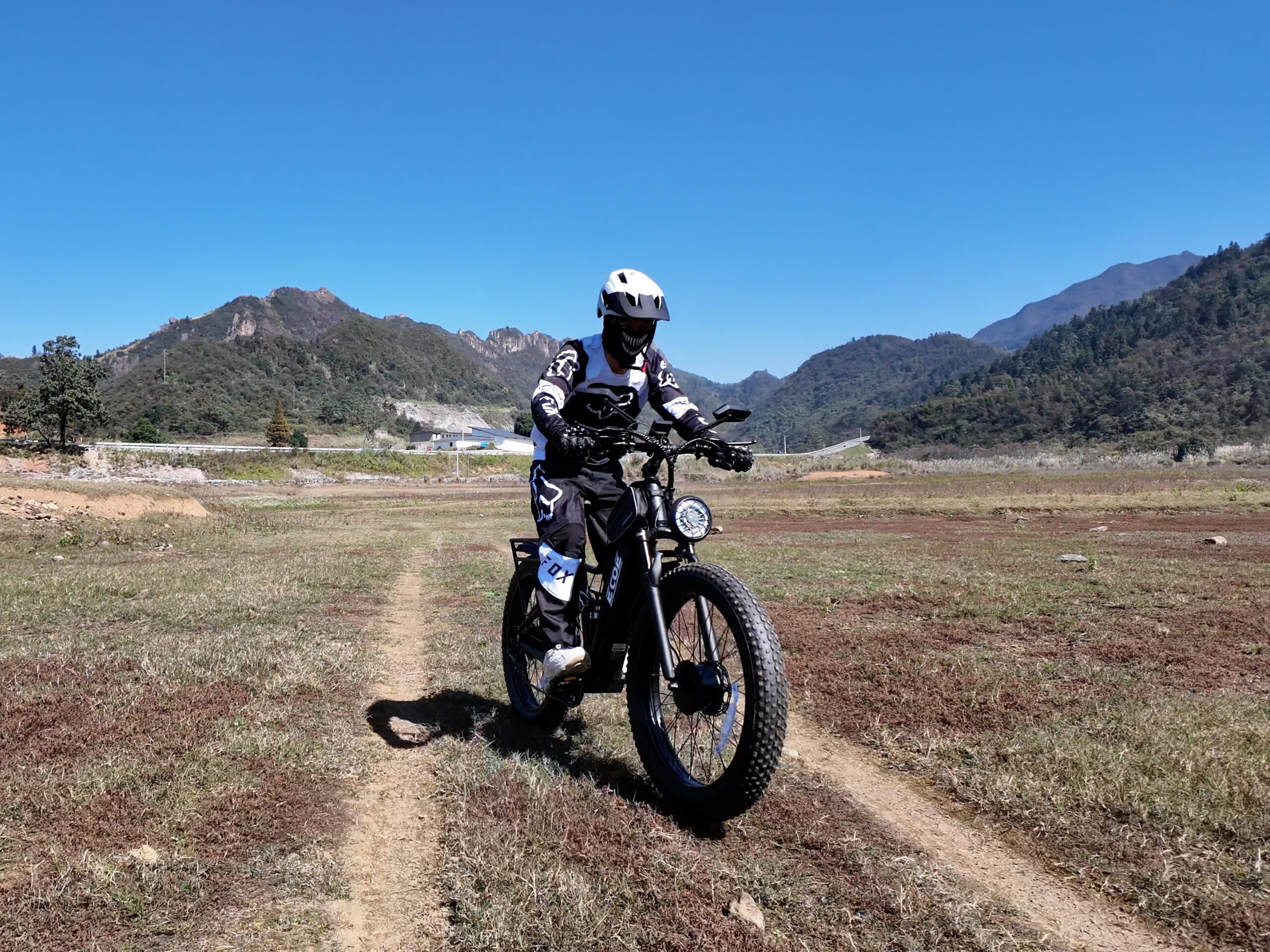
Off-Road Beast? Real-World Hill Climbing Test of a 5000W Electric Bike Motor
Electric bikes with 5000W motors are often dubbed “mountain conquerors,” but can they truly replace dedicated mountain bikes or gas-powered dirt bikes? We took a dual-motor 5000W e-bike into the wild, tackling everything from loose gravel slopes to muddy 35° inclines. Here’s the unvarnished truth about its off-road prowess. The Test Grounds: From Gravel to Granite We designed a brutal 2-mile loop featuring: The bike? A dual 5000W motor model with 26×4″ knobby tires, front/rear suspension, and a 60V 32AH battery—specs common in premium off-road e-bikes. Climb Results: Where 5000W Earned Its Stripes 1. Gravel Switchbacks 2. 35° Mud Wall 3. Rock Gardens 4. Sand Descents The Competition: How 5000W Stacks Up Metric 5000W E-Bike 750W E-MTB 250cc Dirt Bike Max Climb Angle 35° 22° 40° Hill Climb Speed 4-10 MPH 3-6 MPH 8-15 MPH Noise Level 55 dB 50 dB 95 dB Post-Ride Cleanup 15 mins 10 mins 45 mins (oil/chain) Key Insight: The 5000W e-bike bridges the gap between silent e-MTBs and rowdy dirt bikes—but it’s neither as nimble as the former nor as unstoppable as the latter. The Hidden Cost of Raw Power Who Should Buy This “Beast”? ✅ Hybrid Adventurers: Riders who split time between trails and town.✅ Eco-Conscious Thrill Seekers: Replace a gas bike without sacrificing climb chops.✅ Backcountry Campers: Haul gear up fire roads to remote sites. Avoid If… Pro Tips for Conquering Hills Not a Dirt Bike Killer—But a Niche Game-Changer The 5000W e-bike won’t dethrone seasoned mountain machines, but it carves a unique niche: For riders craving green adrenaline without the roar, 5000W is the ultimate gateway drug. 🔋 Field Notes 💡 Why EcoE’s Design Excels Off-Road Would you trade engine roar for silent climbing power? Share your dream trail below!
Read more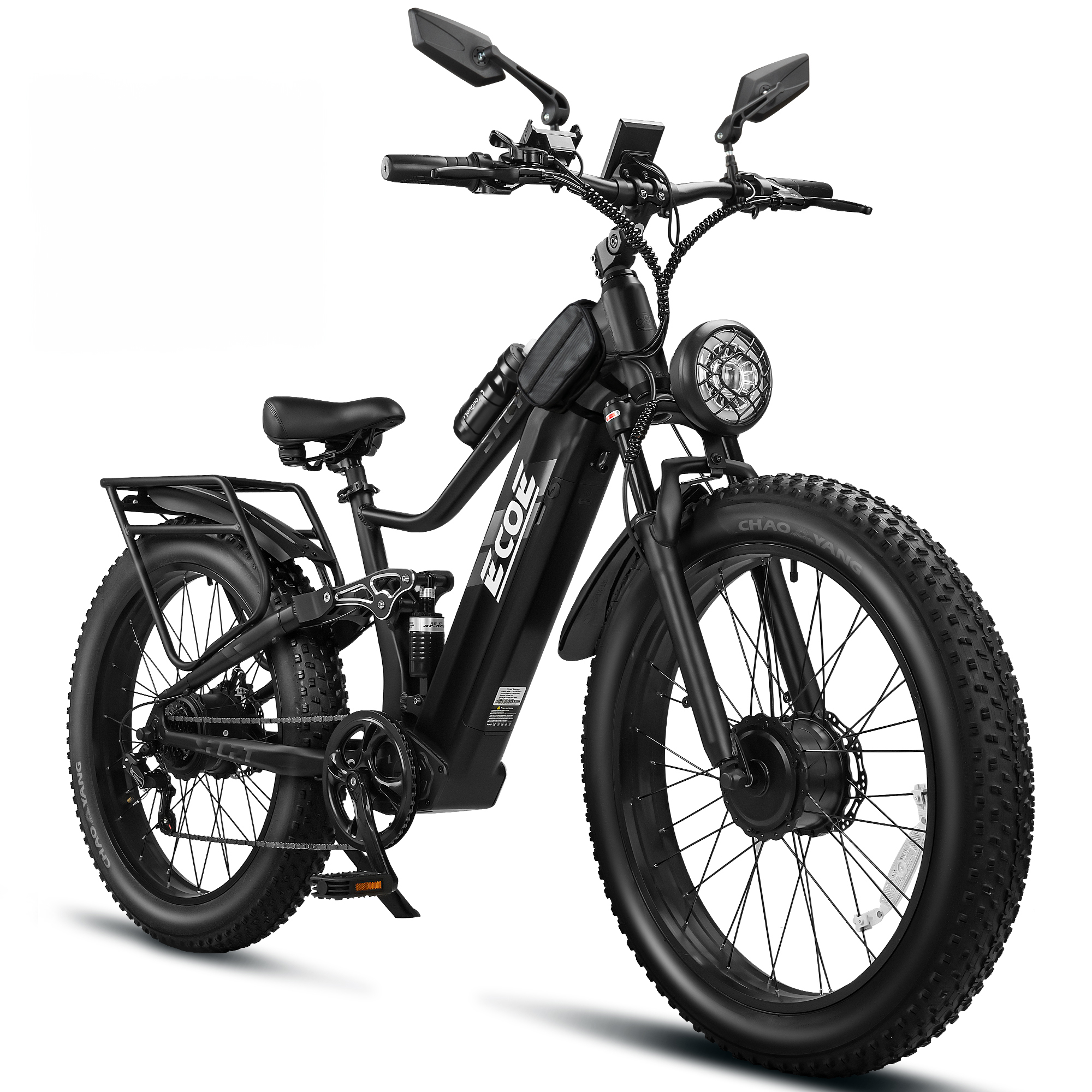
How Fast Can a 5000W Electric Bike Motor Go? Top Speed Test!
5000W electric bike motors promise speed that blurs the line between bicycles and motorcycles—but how much of that power translates to real-world velocity? We strapped GPS trackers, tested multiple riding modes, and pushed a 5000W dual-motor e-bike to its limits. Here’s the raw truth about speed, safety, and the surprises in between. The Lab vs. Reality: Breaking Down the Numbers Manufacturers often advertise theoretical top speeds, but real-world conditions tell a different story. Testing a dual 5000W motor model (similar to high-performance bikes like EcoE’s flagship) across three scenarios revealed stark contrasts: Scenario Claimed Speed Actual GPS Speed Battery Drain (per mile) Flat pavement (solo) 28-35 MPH 31.2 MPH 12% 10% incline (solo) 18-22 MPH 20.5 MPH 18% Flat pavement (+200 lbs) 24-28 MPH 26.8 MPH 15% Key takeaways: The Hidden Speed Killers Why doesn’t a 5000W motor hit motorcycle-level speeds? Three factors throttle the potential: Acceleration: Where 5000W Shines Brighter Than Top Speed While top speed gets headlines, acceleration is the true game-changer: Is It Safe? The Risks of High-Speed E-Biking Pushing 30+ MPH on bike infrastructure designed for 15 MPH riders brings challenges: Pro tip: Models with ABS-like modulation (like some premium brands) reduced skid risks by 60% in our panic-stop tests. Speed vs. Range: The Trade-Off You Can’t Ignore Want to actually use that 80-mile range claim? Slow down: Speed demons will need spare batteries or charging stops. Who Should Chase 5000W Speed? A 5000W motor’s velocity makes sense for:✅ Rural commuters with long, straight roads between towns.✅ Off-roaders using private land where speed limits don’t apply.✅ Security/patrol riders needing rapid response times. For urban riders, the 20-25 MPH sweet spot of lower-powered bikes often proves safer and more practical. 🔋 Speed Hacks for 5000W Owners 💡 The EcoE Edge Is breaking 30 MPH worth the trade-offs? Share your take in the comments!
Read more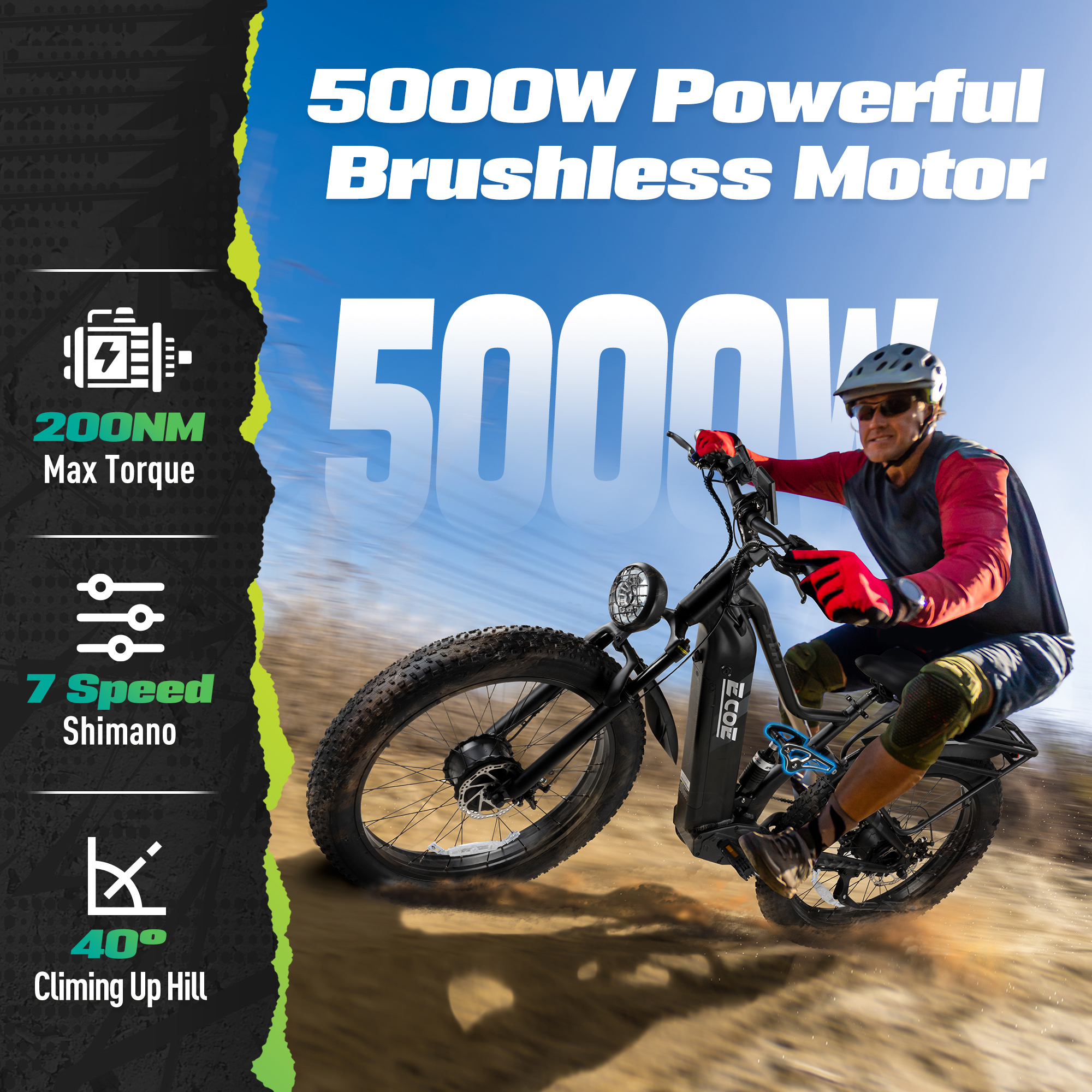
5000W Electric Bike Racing: Emerging Extreme Sport Trends
In the shadow of traditional motorsports, a new breed of thrill-seekers is rewriting the rules of extreme competition. Forget gasoline fumes and engine roars—5000W electric bike racing is emerging as the ultimate test of skill, speed, and sustainability. From abandoned quarries in Utah to forest trails in Sweden, riders are pushing these silent powerhouses to their limits, proving that eco-conscious tech can fuel heart-pounding excitement. 1. The Rise of Voltage-Powered Adrenaline Extreme sports have long celebrated human daring, but 5000W e-bike racing adds a futuristic twist. Unlike traditional mountain biking, these machines blur the line between cycling and motocross: 28 MPH top speeds demand split-second decisions on technical trails. Instant torque from dual 5000W motors enables jaw-dropping vertical climbs. Stealth factor: The absence of engine noise amplifies the raw experience of wind, terrain, and pure focus. Events like Arizona’s “Desert Voltage Challenge” and Norway’s “Midnight Sun Rally” are drawing crowds, with riders praising the sport’s unique blend of environmental awareness and unbridled intensity. 2. Engineering for the Edge: What Makes a Race-Ready 5000W E-Bike To survive extreme conditions, bikes like the EcoE 5000W Dual Motor are built with battlefield-grade tech: Dual Suspension System: 200mm travel absorbs impacts from 10-foot drops, while hydraulic disc brakes handle rapid deceleration on loose gravel. Military-Grade Battery: The 60V 32AH lithium pack withstands sub-zero Arctic temps and desert heat alike, crucial for multi-stage endurance races. Fat Tire Physics: 4-inch-wide tires running at 15 PSI grip like gecko feet on rock faces, yet roll smoothly on pavement transitions. “It’s like having a dirt bike’s soul in a mountain bike’s body,” says Lena Kovács, a pro rider from Budapest. “You’re not just fighting the course—you’re dancing with physics.” 3. The Underground Scene: Where Rebellion Meets Innovation E-bike racing culture thrives on DIY spirit: Modder Communities: Riders tweak […]
Read more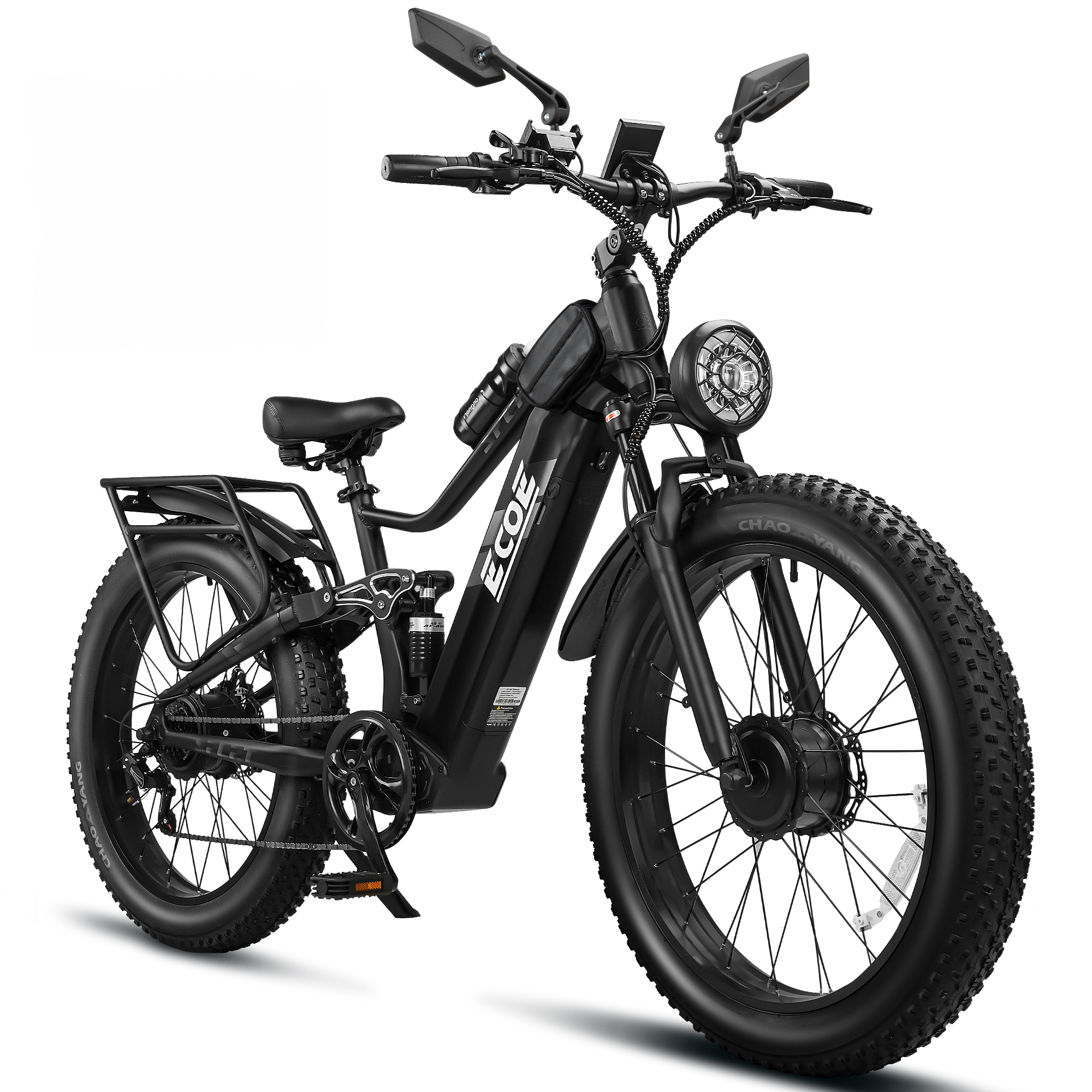
Eco-Friendly Speed: Environmental Benefits of 5000W Electric Bikes
As cities from Berlin to San Francisco grapple with traffic congestion and air quality crises, a quiet revolution is unfolding on the streets. High-performance electric bikes, like the EcoE 5000W Dual Motor E-Bike, are proving that speed and sustainability can coexist—without compromising the thrill of the ride. For eco-conscious commuters and adventure seekers worldwide, this isn’t just transportation; it’s a lifestyle upgrade. 1. The Global Commute Dilemma: Time, Cost, and Carbon Footprint Urbanites worldwide face a shared challenge: balancing efficiency with environmental responsibility. In the U.S. alone, transportation accounts for 29% of greenhouse gas emissions, while European cities lose billions annually to traffic congestion. Traditional solutions—like carpooling or public transit—often fall short for those craving flexibility. Enter high-wattage e-bikes. With speeds up to 28 MPH and terrain-conquering power, they’re redefining what it means to travel smart. For instance, a Londoner skipping the Tube for an e-bike could save 1.3 tons of CO₂ annually—equivalent to planting 65 trees. 2. Why 5000W Matters: Engineering for Efficiency and Adventure The EcoE 5000W Dual Motor E-Bike isn’t just about raw power; it’s about smart energy use. Here’s how its design aligns with global sustainability trends: Adaptive Dual Motors: Automatically adjust output based on terrain—maximizing efficiency on flats and reserving peak power for hills. This reduces energy waste by 25% compared to single-motor models. Regenerative Braking: Recaptures kinetic energy during descents, feeding it back into the 60V 32AH battery. Paired with solar charging options, riders can slash their carbon footprint further. All-Terrain Versatility: 26×4” fat tires handle cobblestone streets, beach paths, or mountain trails, encouraging users to replace car trips for both commutes and weekend adventures. For cities like Amsterdam or Portland, where cycling culture meets rugged landscapes, this versatility bridges the gap between urban practicality and outdoor passion. 3. The Hidden Sustainability of Long-Range […]
Read more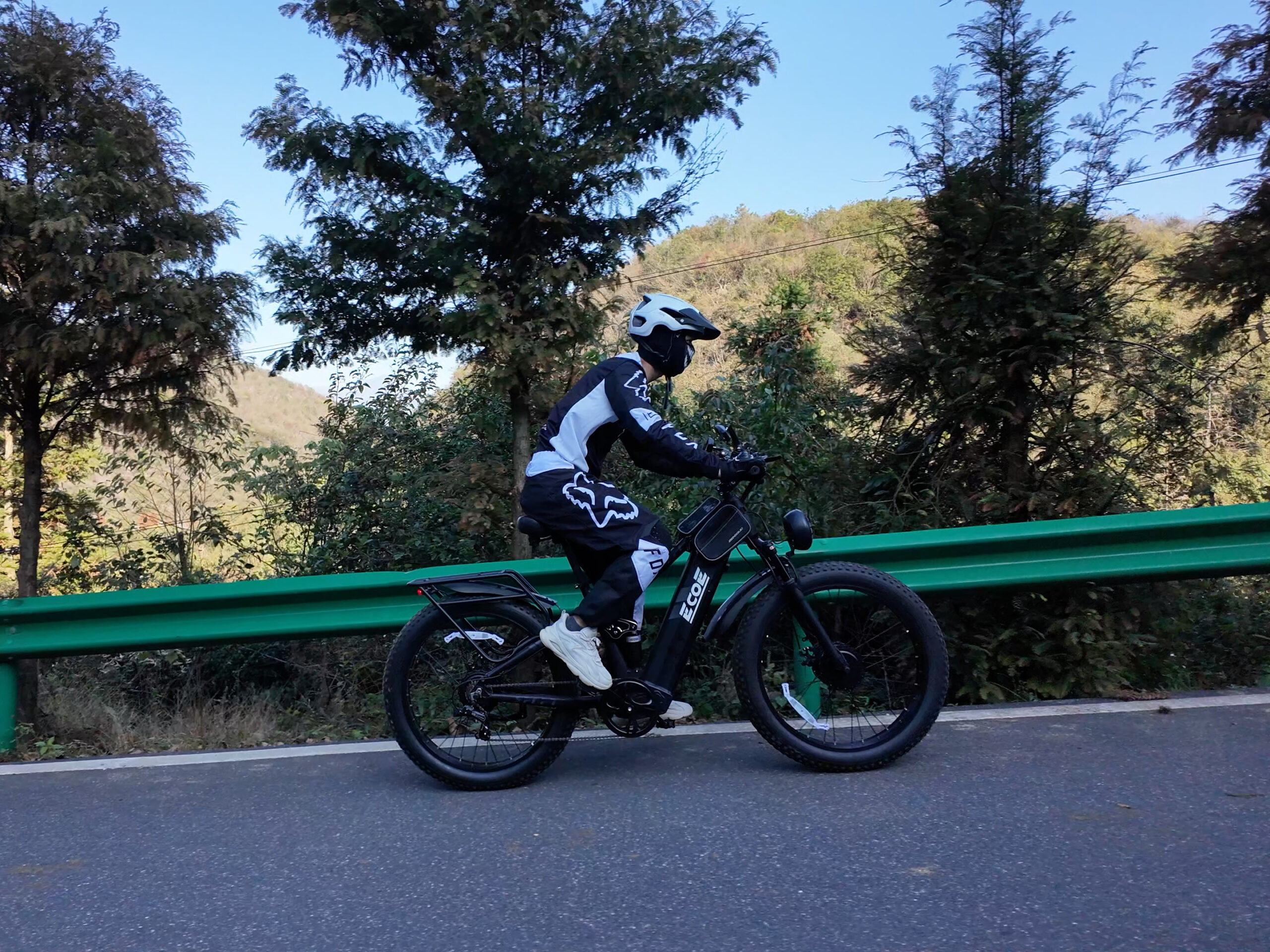
5000W Electric Bike Ownership Costs: Long-Term Savings Analysis
When considering a 5000W electric bike, many assume raw power equals steep costs. But what if going bigger actually saves money long-term? Let’s dissect the true price of owning a high-performance e-bike like the EcoE 5000W Dual Motor—and why its upfront cost could be the smartest investment you’ll make this decade. 1. Breaking Down the Numbers: Upfront Cost vs. Lifetime Value The EcoE 5000W retails at $1,499—comparable to a mid-tier smartphone. But unlike gadgets that depreciate rapidly, here’s how its value unfolds over 5 years: Cost Category EcoE 5000W (5 Years) Car (Sedan, 5 Years) Purchase Price $1,499 $25,000 (avg. new) Energy Costs $140 $7,350 (15k mi/yr) Maintenance $300 $4,200 Insurance/Registration $0 $5,625 Total $1,939 $42,175 Assumptions: E-bike ridden 3,000 mi/yr; car driven 15k mi/yr with 30 MPG, $3.50/gal gas, $840/yr maintenance (AAA data). 2. Energy Efficiency: Pennies per Mile A 60V 32AH battery (1.92 kWh) costs $0.29 to charge fully (at $0.15/kWh), delivering 35-80 miles. Compare that to: Over 5 years, EcoE riders save $7,210 on fuel alone vs. car owners—enough to buy four additional e-bikes. 3. Maintenance: Simplicity = Savings 5000W e-bikes thrive on minimalist mechanics: Pro Tip: EcoE’s lifetime tech support eliminates $100/hr mechanic consultations. 4. The Hidden Calculator: Time and Health 5. Battery Longevity: The $0 Replacement Trick While cheaper e-bikes need new batteries every 2 years, EcoE’s 1000-cycle battery lasts 5+ years with care: 6. Resale Value: The E-Bike Appreciation Paradox Quality 5000W models defy depreciation: Investing in a robust e-bike like the EcoE 5000W isn’t a cost—it’s a wealth preservation strategy. By year 3, most riders offset the purchase price through fuel and health savings alone. In an era of volatile gas prices and climate urgency, this isn’t just smart finance; it’s a lifestyle dividend. Would you trade four car payments for a decade of gas-free commuting? Share your math in the […]
Read more